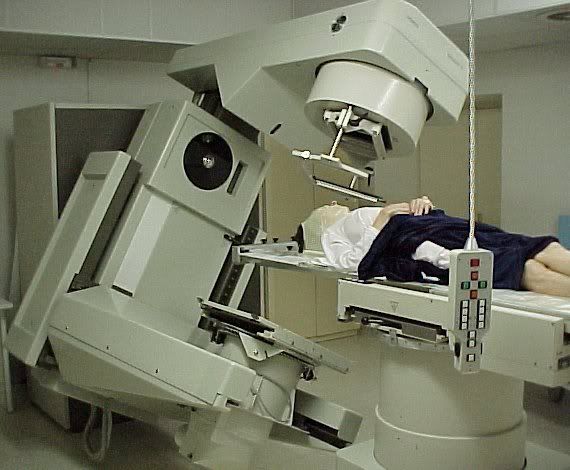Dose-Dense Adjuvant Chemotherapy for Breast Cancer.
Breast cancer is the most frequently diagnosed cancer in women in the United States and the second leading cause of cancer death in women, surpassed only by respiratory malignancies. Of the 212,930 new cases of breast cancer expected in 2005, only 1,690 will be in men. Risk factors for the disease are older age, previous diagnosis or family history of breast cancer, early menarche, late menopause, obesity after menopause, nulliparity, and giving birth to one's first child after the age of 30 years.
The American Cancer Society has reported that 5-year relative survival in localized breast cancer (cancer that has not spread to lymph nodes or other locations outside the breast) increased from 80% in the 1950s to 98% today. The prognosis in patients with distant metastasis is poor, however, with the 5-year relative survival rate being 26%. Surgery and radiotherapy are used to control tumors in the breast, chest wall, and regional lymph nodes, and systemic treatment with cytotoxic chemotherapy and hormonal agents is aimed at reducing the dissemination of cancer, systemic recurrences of it, and mortality due to the disease.
A meta-analysis of randomized trials throughout the world in women with early-stage breast cancer clearly showed that several months of polychemotherapy after surgery significantly reduced the risk of recurrence by 23.5% and death by 15.3%. Survival was also greater in women who had been treated with adjuvant therapy with a regimen that contained an anthracycline (doxorubicin or epirubicin) than in those treated with cyclophosphamide, methotrexate, and fluorouracil (CMF); 6 months of anthracycline-based chemotherapy reduced the annual breast cancer death rate by 38% in women who were less than 50 years old at diagnosis and by 20% in women who were between 50 and 69 years old at diagnosis. Efforts to further increase survival have led to the development of regimens that include new agents such as taxanes (paclitaxel and docetaxel) and platinum compounds. In community oncology practices in the United States, however, CMF, CAF (cyclophosphamide, doxorubicin, and fluorouracil), and AC (doxorubicin and cyclophosphamide) remain the most commonly used adjuvant regimens for early-stage breast cancer.
In addition to developing new drugs, research has focused on maximizing tumor cell kill by modifying the dose or schedule of the existing agents and regimens and by adding supportive and complementary therapies. Clinical data indicate that increasing the frequency of chemotherapy is more effective than increasing the total dose.
Rationale for Dose-Intense Chemotherapy Regimens
Dose intensity is the amount of drug delivered per unit of time, usually expressed in mg/(m2 wk). In clinical trials, relative dose intensity (RDI) is the ratio of the dose intensity of a drug in a test regimen to the dose intensity of the same drug in a standard regimen. In clinical practice, RDI is calculated as the ratio of the delivered dose intensity to the dose intensity of the standard regimen. Chemotherapy dose reductions and delays, which are common in clinical practice, can significantly reduce dose intensity, and using dose reductions to manage toxicity has been described as "killing with kindness." Adjuvant chemotherapy for breast cancer is less effective when the RDI is below a threshold value, typically less than 85% of the standard dose intensity.
In a classic study of adjuvant CMF in women with breast cancer, disease-free and overall survival at 20 years were higher in those treated with an RDI of 85% or more than in those treated with less than 85%. Survival in patients treated with an RDI of less than 65% was similar to that in those treated with surgery alone. Other retrospective and prospective studies with CMF and CAF have also shown the importance of avoiding reduced doses of chemotherapy, yet dose reductions and delays are common in clinical practice.
With the greater awareness that dose intensity is an important predictor of the outcome in chemotherapy for breast cancer, regimens with greater dose intensity than the standard have been developed. The dose can be intensified by dose escalation (higher-than-conventional doses are administered) or dose density (the interval between cycles is shortened). With many dose-dense regimens, the same total dose is administered in 2-week rather than 3-week cycles.
The potential efficacy of dose-dense chemotherapy is supported by models of tumor cell growth which predict that moderate doses of chemotherapy will be effective when they are given in quick succession, to allow less time for tumor regrowth between cycles or the development of drug-resistant mutants. Clinical trials that have tested the efficacy of both dose-escalated and dose-dense regimens are described below. It should be noted that neutropenia, the primary dose-limiting toxicity of many modern chemotherapy regimens, must be overcome for dose-intense regimens to be used. Granulocyte colony-stimulating factors (G-CSFs), which reduce the incidence and duration of neutropenia and infectious complications, make it possible to manage myelosuppression, and the G-CSF filgrastim (Neupogen) has facilitated the use of dose-dense regimens in breast cancer.
Managing Toxicity
A proactive plan for reducing toxicities in dose-dense regimens, which generally requires the use of G-CSF, erythropoietin, and antiemetics, should be devised and implemented. Pretreatment laboratory values are obtained, and the patient's emetic and pretreatment history recorded in the patient assessment document.
The toxicity of the regimen that will be used should also be considered during risk assessment. For example, conventional regimens of CMF are typically associated with nausea, myelosuppression, and ovarian failure. Doxorubicin and cyclophosphamide can cause alopecia and vomiting. Taxanes can cause myelosuppression, hypersensitivity reactions, peripheral neuropathy, myalgias, and arthralgias, and docetaxel can cause fluid accumulation. Patients who have been heavily treated with chemotherapy, radiotherapy, or biotherapy may have reduced bone marrow reserves and may be more susceptible to infection, bleeding, and anemia.
Neutropenia
With conventional every-3-week adjuvant regimens for breast cancer, there is often a decrease in the absolute neutrophil count after the administration of the chemotherapy, but absolute neutrophil count recovery is more likely before the start of the next cycle. Dose-dense regimens, however, do not allow adequate time for neutrophil recovery. Granulocyte colony-stimulating factor support makes the recovery of the bone marrow possible when it is given at 5 µg kg-1 d-1 starting no earlier than 24 hours after the chemotherapy and continuing as clinically indicated. It should not, however, be given within 24 hours before a dose of chemotherapy, because of the potential for an increase in the sensitivity of rapidly dividing myeloid cells to cytotoxic chemotherapy.
The preliminary results of recent studies have also shown that dose-dense regimens can be safely delivered with pegfilgrastim (Neulasta), a G-CSF that can be given once per chemotherapy cycle. One of these studies of dose-dense AC with pegfilgrastim support reported an incidence of febrile neutropenia of 1.5%, comparable to that seen with filgrastim in previous studies. The once- per-cycle dosing of pegfilgrastim could potentially simplify the use of dose-dense regimens for patients and healthcare workers alike.
Anemia
Anemia may occur more rapidly and more frequently with dose-dense regimens than with conventional regimens. The incidence of anemia with dose-dense regimens was low, but at least 1 red blood cell transfusion was required in 13% of the patients treated with the concurrent dose-dense regimen. A strategy for avoiding the risks of red blood celltransfusions is to use an erythropoietin, such as epoetin alfa (Epogen) or darbepoetin alfa (Aranesp).
Darbepoetin alfa has efficacy similar to that of epoetin alfa and has a 3-fold-longer serum half-life and can therefore be dosed less frequently. In recently published clinical studies, darbepoetin alfa was shown to be safe and effective when administered once every 1, 2, or 3 weeks in patients treated with multicycle chemotherapy.
Darbepoetin alfa was initiated in 92% of patients according to a predetermined algorithm; no red blood cell transfusions were necessary. The guidelines of the National Comprehensive Cancer Network and of the American Society of Clinical Oncology recommend the use of erythropoietin to achieve and maintain hemoglobin levels at 120 g/L (12 g/dL) for optimal patient quality-of-life benefits and for lessening the need for transfusions. Increasing the hemoglobin level above 120 g/L is not recommended because erythropoietic agents can cause thrombotic events and other adverse events in a patient population in whom there already is a higher incidence of thrombosis.
Nausea and Vomiting
Mild to moderate nausea and vomiting are adverse events that occur in most patients treated with adjuvant chemotherapy for breast cancer; fewer than 5% report that these symptoms are severe. With dose-dense regimens, as with conventional regimens, aggressive treatment of chemotherapy-induced nausea and vomiting (CINV) that occurs in the first cycle of chemotherapy is important, as it is a strong predictor of CINV in later cycles. It should be noted, however, that the study by Citron and colleagues reported that severe emesis was more common in patients treated with concurrent chemotherapy than in those treated with sequential single agents. Therefore, sequential single agents are recommended in patients in whom emesis is a concern.
Chemotherapy-induced nausea and vomiting is typically categorized according to its onset relative to the administration of the chemotherapy. Acute CINV may occur within minutes after the administration of chemotherapy, and delayed CINV occurs from a day to a week after its administration. Anticipatory nausea and vomiting, thought to be a conditioned response to stimuli that are associated with chemotherapy, typically occurs within 12 hours before the chemotherapy but can occur up to a week before it.
Guidelines for the pharmacologic prevention of CINV have been published. Serotonin receptor antagonists, such as ondansetron (Zofran), granisetron (Kytril), palonosetron (Aloxi), and dolasetron (Anzemet), are recommended for acute and delayed CINV with chemotherapy agents that have a moderate to high risk of CINV, such as cisplatin, carboplatin, cyclophosphamide, and anthracyclines. Lorazepam (Ativan) can be given to reduce anxiety and anticipatory nausea and vomiting. In addition, because of the greater occurrence of severe emesis with AC chemotherapy, antiemetics such as aprepitant (Emend) are prescribed in all cycles of chemotherapy.
Stomatitis and Mucositis
Stomatitis and mucositis, which may be more common in patients with breast cancer who are treated with fluorouracil-containing regimens, are currently treated palliatively. Keratinocyte growth factor has shown promise in randomized controlled studies in patients with hematologic malignancies treated with total body irradiation with high-dose chemotherapy and autologous peripheral blood progenitor cell transplantation, reducing the duration, and incidence of mucositis.
Neurotoxicity
The taxanes can induce sensory and motor peripheral neuropathy, which is usually mild to moderate. Interventions for preventing or treating neuropathy are lacking, so it is generally managed by chemotherapy dose reductions or delays.
Patient Education
Dose-dense therapy presents an opportunity for oncology teams to raise the standard of care for patients with breast cancer. Nurses are in a position to educate patients and caregivers before the administration of dose-dense therapy. Patients should be aware of the potentially greater risks and the potential advantages of the regimen that they are about to be treated with. The importance of adhering to the planned dose should be emphasized, and patients should be aware of the necessity of making their clinic visits for therapy, laboratory monitoring, and growth factor administration. To ensure prompt identification and effective management of any adverse events that might occur, patients should be given a list of symptoms to monitor for and be instructed to contact the clinic if any of them occur. In particular, outpatients should be instructed on how and when to take their temperature to monitor for febrile neutropenia, which may not have any other presenting symptoms.
Conclusions
Adjuvant dose-dense regimens improve the clinical outcomes in patients with breast cancer. The delivery of dose-dense chemotherapy every 2 weeks has been made possible by the use of filgrastim to lessen neutropenia. The need for supportive care may be greater in patients treated with dose-dense regimens, and nurses should be involved in developing and implementing preventive care plans. Whether a patient is treated with conventional or dose-dense chemotherapy, maintaining dose intensity through optimal management of adverse events can improve disease-free and overall survival.




1 Comments:
blog url buy tramadol online mastercard overnight - generic tramadol online
Post a Comment
<< Home